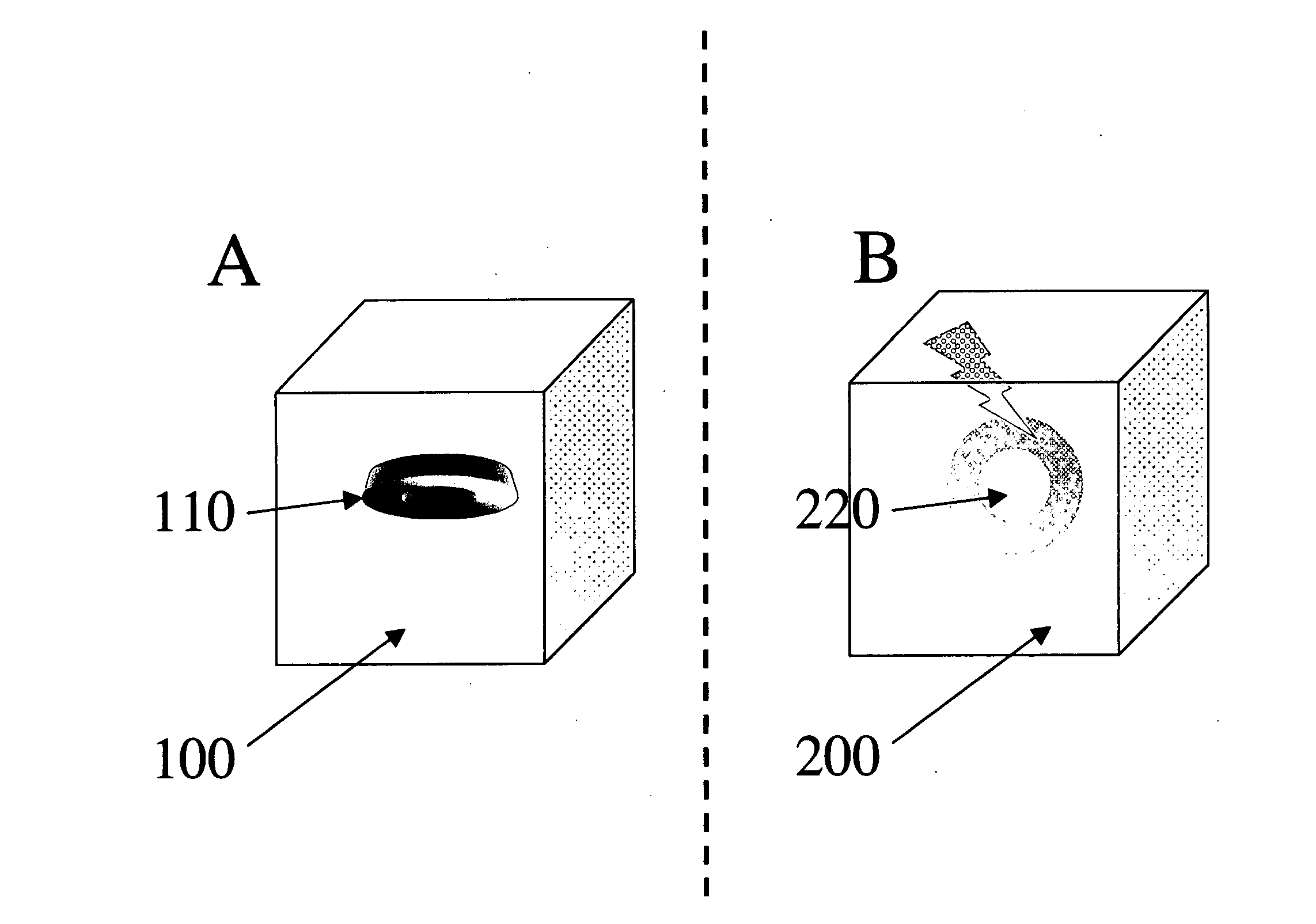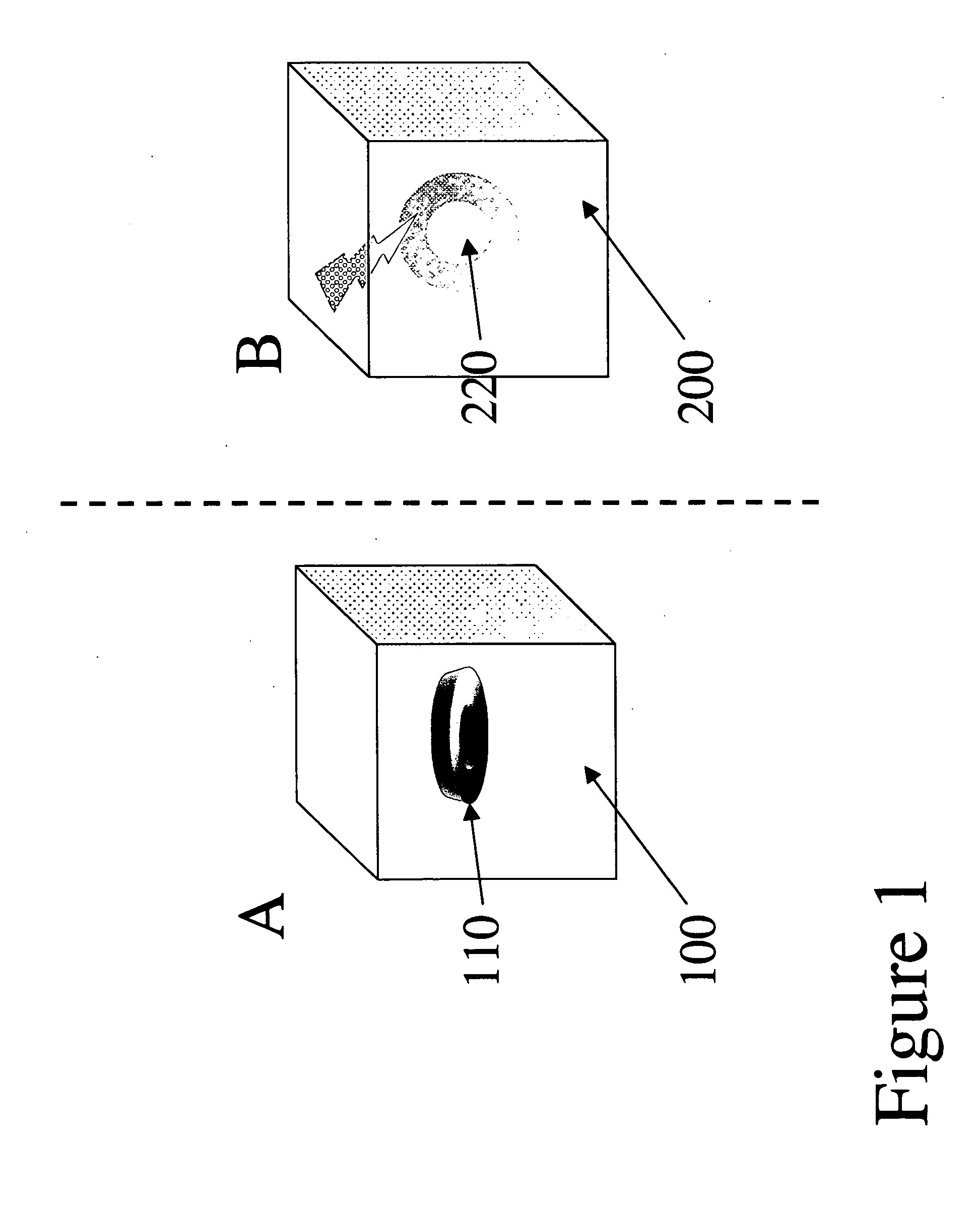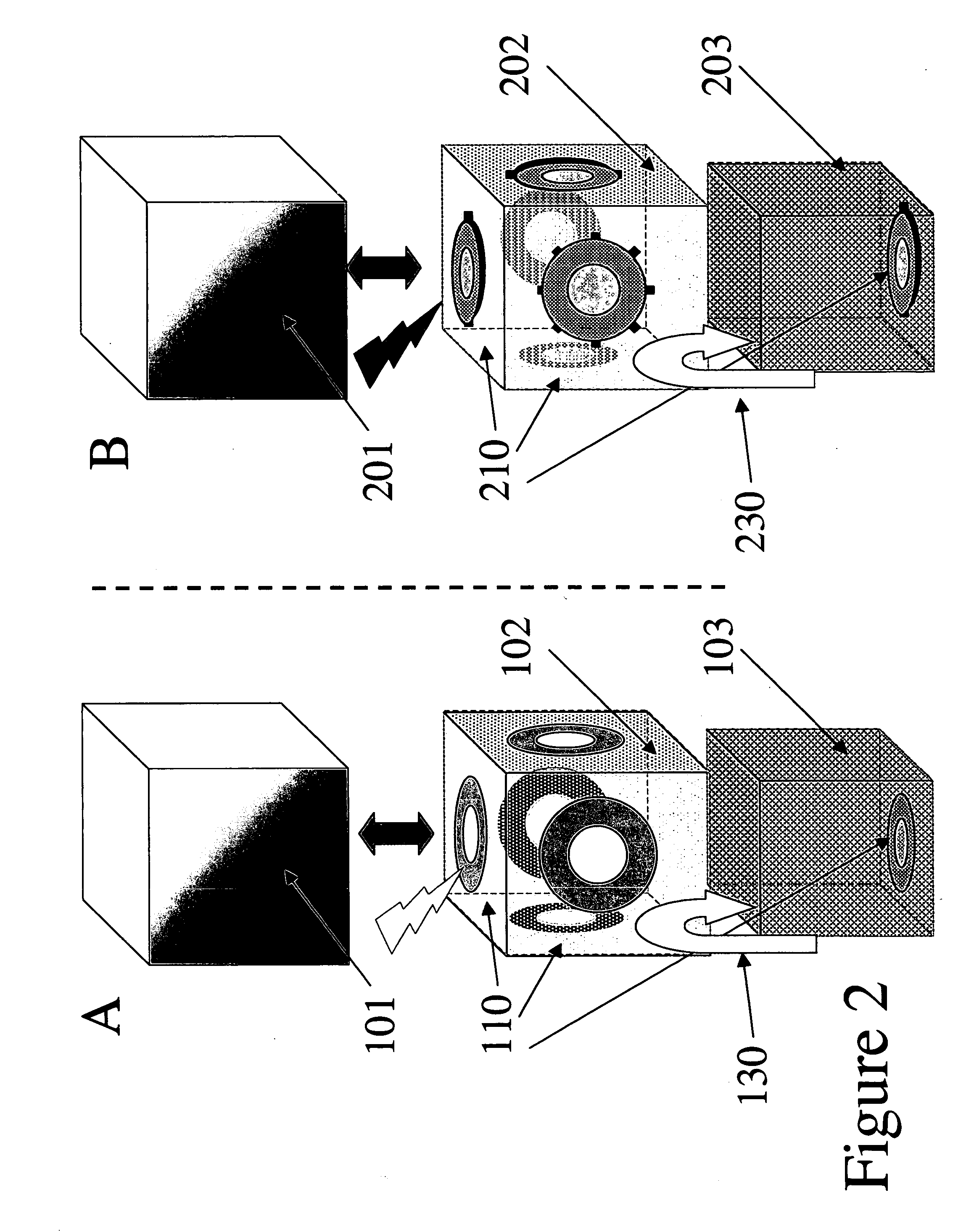Dice that recognize the values of their own throws and transmit them to computers, with applications to electronic and casino games
a technology of dice and values, applied in the field of dice that recognize the values of their own dice and transmit them to computers, with applications to electronic and casino games, can solve problems such as marred camera approaches, and achieve the effect of enriching the experien
- Summary
- Abstract
- Description
- Claims
- Application Information
AI Technical Summary
Benefits of technology
Problems solved by technology
Method used
Image
Examples
Embodiment Construction
[0059] We shall call state of the die the value of the top face of the die at rest, or the more precise result of which of the faces of the die is its bottom face at rest. The bottom face of the die will be deductible or will be deduced from the state in which some embedded system (using gravity or some physical effect) will find itself after the die has reached some rest position, and lies on a face which is then the down face. The fact that the knowledge of the value on the face that is up is deductible from the knowledge of which face is down is a plain result of the Standing Assumption that we make that: [0060]“Any dice involved is known and in particular, one knows which face is up when one knows which face is down.”
[0061] This does not imply for all dices that one can deduce the value of the top face from the value of the bottom face since dice can be conceived with many intent and forms, and in particular with many of their faces carrying the same value if so designed. Otherw...
PUM
 Login to View More
Login to View More Abstract
Description
Claims
Application Information
 Login to View More
Login to View More - R&D
- Intellectual Property
- Life Sciences
- Materials
- Tech Scout
- Unparalleled Data Quality
- Higher Quality Content
- 60% Fewer Hallucinations
Browse by: Latest US Patents, China's latest patents, Technical Efficacy Thesaurus, Application Domain, Technology Topic, Popular Technical Reports.
© 2025 PatSnap. All rights reserved.Legal|Privacy policy|Modern Slavery Act Transparency Statement|Sitemap|About US| Contact US: help@patsnap.com



